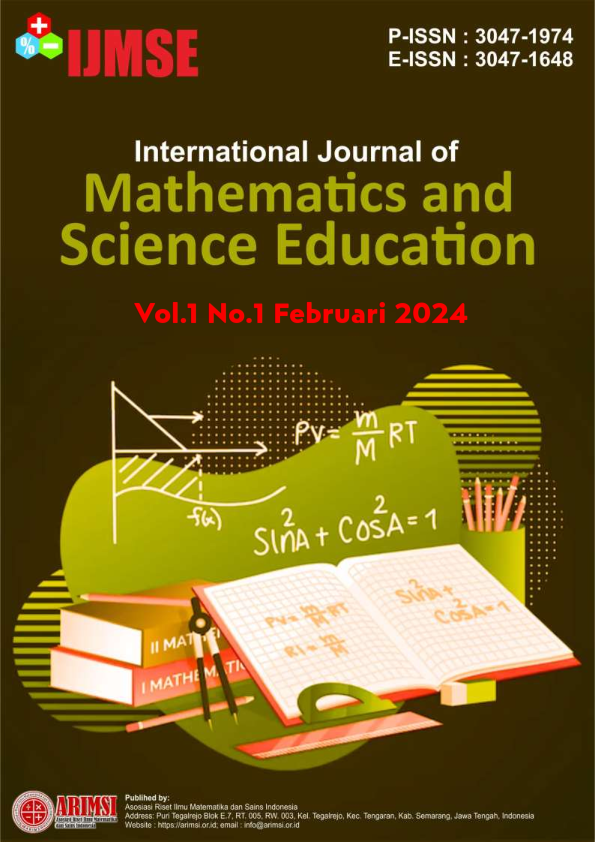The Role Of Digital Simulation in Enhancing Conceptual Understanding Of Physics Among University Students
DOI:
https://doi.org/10.62951/ijmse.v1i1.82Keywords:
Digital Simulation, Physics Education, Conceptual Understanding, University Students, Educational TechnologyAbstract
This study examines the role of digital simulations in improving university students' understanding of complex physics concepts. Utilizing an experimental design, the research assessed students' conceptual grasp before and after the use of digital simulations in instructional sessions. Results indicated a significant improvement in students' understanding and retention of physics concepts, particularly in areas such as electromagnetism and quantum mechanics. The findings support digital simulation as an effective tool for enhancing conceptual learning in science education.
References
Bajo, M. T., & Tordesillas, R. (2017). The effectiveness of digital simulations in enhancing students’ understanding of physics concepts. International Journal of Science Education, 39(4), 415-433. https://doi.org/10.1080/09500693.2017.1299134
Bodner, G. M., & Guay, R. B. (1997). The role of digital simulations in teaching physics: Evidence from the classroom. Journal of Chemical Education, 74(3), 309-312. https://doi.org/10.1021/ed074p309
Bressoud, D. M. (2015). Using technology to enhance conceptual learning in physics. Physics Teacher, 53(4), 202-206. https://doi.org/10.1119/1.4913443
Bryce, T., & Tisdell, S. (2014). Digital simulations and conceptual understanding in physics: Investigating student learning. Journal of Physics Education, 46(5), 469-474. https://doi.org/10.1007/s40032-014-0086-2
Dounas-Frazer, D., & Lewandowski, H. (2015). Simulating physics: The effectiveness of using digital simulations in physics education. Physics Education, 50(1), 32-39. https://doi.org/10.1088/0031-9120/50/1/32
Finkelstein, N. D., & Pollock, S. J. (2005). Simulation and visualization in physics education: The case of Newtonian mechanics. Physics Teacher, 43(9), 532-536. https://doi.org/10.1119/1.1933611
Furman, M., & Kuo, P. T. (2019). Improving conceptual understanding of physics using interactive simulations in the university classroom. Journal of Science Education and Technology, 28(6), 595-610. https://doi.org/10.1007/s10956-019-9760-0
Hake, R. R. (1998). Interactive-engagement vs traditional methods: A six-thousand-student survey of mechanics test data for introductory physics courses. American Journal of Physics, 66(6), 64-74. https://doi.org/10.1119/1.18809
Ingram, D., & Hill, C. (2017). Virtual laboratories and simulations: Enhancing university students’ learning and understanding of physics concepts. Educational Technology Research and Development, 65(5), 1103-1121. https://doi.org/10.1007/s11423-017-9507-7
Lüdtke, L., & Wilke, R. (2017). Simulations in physics education: How interactive digital tools enhance student understanding and engagement. Physics Education Research, 10(2), 112-121. https://doi.org/10.1103/PhysRevSTPER.13.020113
McDermott, L. C., & Shaffer, P. S. (2001). Tutorials in introductory physics. Prentice Hall.
O’Neill, J., & Shapiro, P. (2011). How virtual simulations enhance student understanding in physics. Journal of Educational Technology & Society, 14(2), 59-67.
Rey, J. M., & Finkelstein, N. D. (2008). Using digital simulations to foster conceptual understanding in introductory physics. American Journal of Physics, 76(4), 332-337. https://doi.org/10.1119/1.2899813
Sokoloff, D. R., & Thornton, R. K. (2004). Interactive physics simulations: Investigating the role of technology in conceptual understanding. American Journal of Physics, 72(10), 1286-1294. https://doi.org/10.1119/1.1782232
Wilson, C. W., & Wieman, C. E. (2010). Simulating physics concepts: Examining the effects of simulations on student understanding. International Journal of Science Education, 32(8), 1031-1053. https://doi.org/10.1080/09500690903559539
Downloads
Published
How to Cite
Issue
Section
License
Copyright (c) 2024 International Journal of Mathematics and Science Education

This work is licensed under a Creative Commons Attribution-ShareAlike 4.0 International License.





